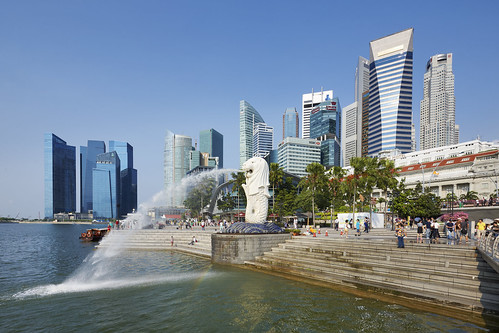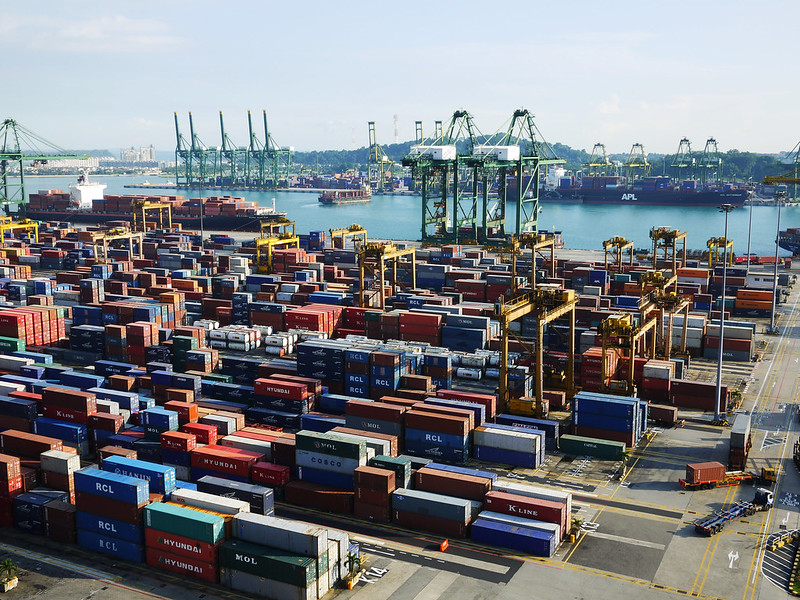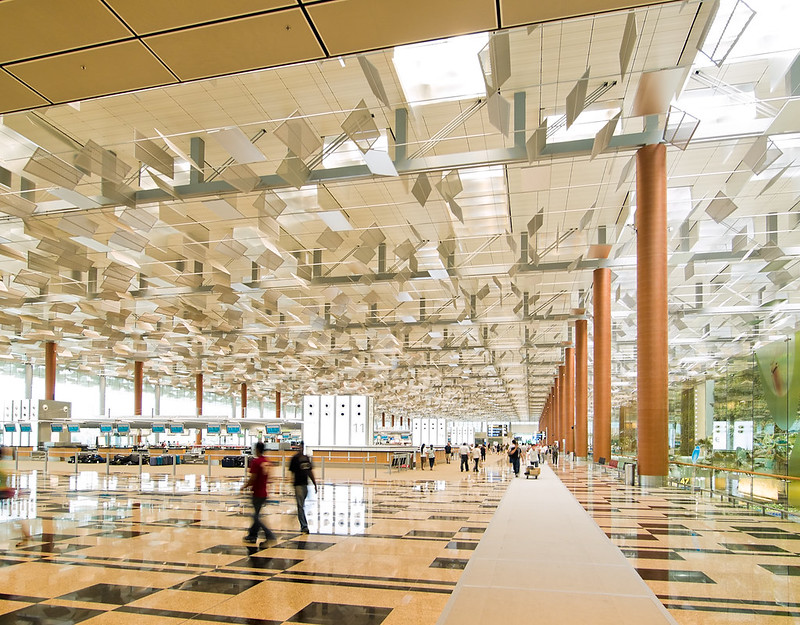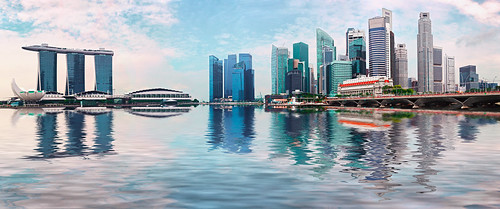Transportation System of Singapore
(Copyrighted Content by Aung Myo Myint – Not for Re-use)

Singapore is a small city-state in Southeast Asia, but with a population of over five million people. Having a large population like this, the city obviously should provide a very organized transportation system. If you are travelling to Singapore you should know that the city is well connected with the rest of the world via sea, land and air.

The Port of Singapore is the Best Seaport in Asia and it was ranked a couple of years ago as the Busiest Port, surpassing Shanghai and Hong Kong. Boats and ferries serve the nearby islands of Indonesia and Malaysia and can be found at Changi Point Ferry Terminal, Tanah Merah Ferry Terminal, Singapore Cruise Centre and Marina Bay Cruise Centre Singapore.
On land, two links connect Singapore and Malaysia. The first one is Johor-Singapore Causeway and connects Johor Bahru in Johor, Malaysia to Woodland in Singapore. The second one is the international railway line operated by Keretapi Tanah Melayu and it’s basically an extension of the Malaysian rail network.

Singapore is served by the Singapore Changi Airport that offers flights to over 70 cities on six continents. You can also find two budget airlines, Valuair and Jetstar Asia Airways.

A fun way to see the Lion City from above is if you take the cable car system that connects the main island of Singapore with Mount Faber. But if you are afraid of heights you can easily take use of the roads or the expressways and don’t forget that you should drive on the left.
Once you arrived in Singapore, you will see that getting around is extremely easy. You have a variety of modes to choose from: bus, rail and taxi. The public transport is highly appreciated by the Singaporeans and the majority uses it to go to work or school.

Local buses are slower and relatively harder to use than the MRT but the silver-lining is that you can see the sights and not an underground tunnel. Taxis for example have a reasonably price and for that matter very few visitors rent cars. The advantage of a taxi is that you can travel to distant locations outside the CBD faster than mass transport.

Since I mentioned MRT, you probably ask yourselves what is that. The Mass Rapid Transit it’s a standard gauge system which has a rail network of 158 km and spans the entire city-state. There are four main lines running: the North South Line, the East West Line, the Circle Line and the North East Line.
There is also a 2 km line that links the Sentosa Island to the mainland and a Light Rail Transit (LRT) system. The LRT concept is that people should be brought by rail line from door to door without using the buses and therefore avoiding traffic congestions and traffic lights on the roads.

I personally love trishaws and bicycles, although bike lanes are a rarity and certain routes can become treacherous. Visiting the city from a bumboat would be a great experience for any tourist and cost as little as $3 or $13 for a nice view of CBD skyscraper.
No matter the mode of transportation you choose, Singapore is a must see city and I would recommend at least 7 days.


Singapore is a small city-state in Southeast Asia, but with a population of over five million people. Having a large population like this, the city obviously should provide a very organized transportation system. If you are travelling to Singapore you should know that the city is well connected with the rest of the world via sea, land and air.

The Port of Singapore is the Best Seaport in Asia and it was ranked a couple of years ago as the Busiest Port, surpassing Shanghai and Hong Kong. Boats and ferries serve the nearby islands of Indonesia and Malaysia and can be found at Changi Point Ferry Terminal, Tanah Merah Ferry Terminal, Singapore Cruise Centre and Marina Bay Cruise Centre Singapore.
On land, two links connect Singapore and Malaysia. The first one is Johor-Singapore Causeway and connects Johor Bahru in Johor, Malaysia to Woodland in Singapore. The second one is the international railway line operated by Keretapi Tanah Melayu and it’s basically an extension of the Malaysian rail network.

Singapore is served by the Singapore Changi Airport that offers flights to over 70 cities on six continents. You can also find two budget airlines, Valuair and Jetstar Asia Airways.

A fun way to see the Lion City from above is if you take the cable car system that connects the main island of Singapore with Mount Faber. But if you are afraid of heights you can easily take use of the roads or the expressways and don’t forget that you should drive on the left.
Once you arrived in Singapore, you will see that getting around is extremely easy. You have a variety of modes to choose from: bus, rail and taxi. The public transport is highly appreciated by the Singaporeans and the majority uses it to go to work or school.

Local buses are slower and relatively harder to use than the MRT but the silver-lining is that you can see the sights and not an underground tunnel. Taxis for example have a reasonably price and for that matter very few visitors rent cars. The advantage of a taxi is that you can travel to distant locations outside the CBD faster than mass transport.

Since I mentioned MRT, you probably ask yourselves what is that. The Mass Rapid Transit it’s a standard gauge system which has a rail network of 158 km and spans the entire city-state. There are four main lines running: the North South Line, the East West Line, the Circle Line and the North East Line.
There is also a 2 km line that links the Sentosa Island to the mainland and a Light Rail Transit (LRT) system. The LRT concept is that people should be brought by rail line from door to door without using the buses and therefore avoiding traffic congestions and traffic lights on the roads.

I personally love trishaws and bicycles, although bike lanes are a rarity and certain routes can become treacherous. Visiting the city from a bumboat would be a great experience for any tourist and cost as little as $3 or $13 for a nice view of CBD skyscraper.
No matter the mode of transportation you choose, Singapore is a must see city and I would recommend at least 7 days.

great blog I am so pleased to read this post. It is very helpful for me. and we are provides better singapore transportation in singapure thanks
ReplyDelete